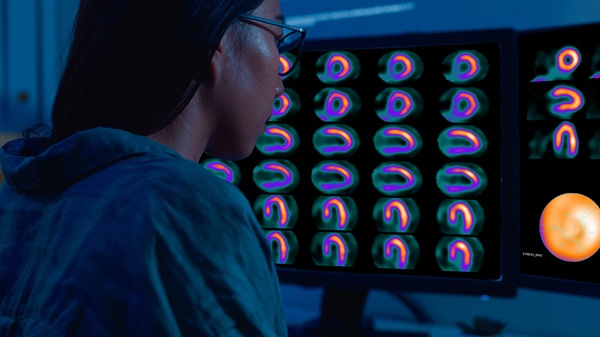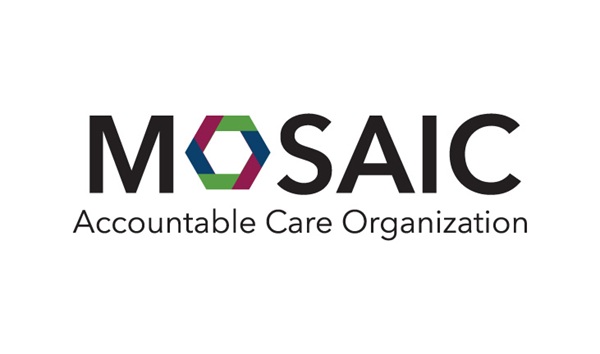Henry Ford Health Drives Sustainability with Central Energy Hub
June
25,
2024

DETROIT – Henry Ford Health leaders have long talked about how the major expansion of their Detroit flagship hospital will be one of the largest fully electric-capable hospital facilities in the country. But how does that promise become a reality?
Enter the Central Energy Hub.
As part of Henry Ford Health’s broader commitment to sustainability and environmental stewardship, the organization is planning to heat and cool its new Detroit hospital facilities with electricity. To do this, the system is building a Central Energy Hub, also known as the CEH, on the southwest corner of the Destination: Grand development site on W. Grand Blvd. The CEH will feature a hot and chilled water pump system that will provide electric heating and cooling to the new hospital facilities—the new patient tower, shared services building and parking deck—allowing the system to limit and eventually fully avoid natural gas usage in those facilities. That means those buildings, including the CEH itself, will produce zero fossil fuels or emissions by our target dates in 2050.
“As a health system, we plan to reduce our greenhouse gas emissions by 50 percent by 2030 and achieve net zero carbon emissions by 2050,” said Robin Damschroder, Executive Vice President, Chief Financial and Business Development Officer for Henry Ford Health. “What will be happening inside the Central Energy Hub is a meaningful example of how we are making our sustainability pledges a reality.”
Natural gas has been shown to contribute to pollution and asthma, so by limiting and eventually eliminating the need for natural gas in the new hospital facilities, Henry Ford Health will make a positive impact on the environment as well as set an example for other health systems looking to make an impact in sustainability.
The four-story, 30,000-square-foot CEH will feature cutting edge technology such as being designed for full electrification, waste heat recovery and digital energy management. Beautifully designed with the community in mind, the building will integrate seamlessly into the new campus.
“We chose the location and design for the Central Energy Hub after a lot of thoughtful planning,” said Jerry Darby, Vice President of Campus Planning, Development and Design. “It’s an area limiting adjacency to our neighbors. The entire facility, including all mechanical equipment, will be screened in, and it meets all noise requirements for a residential neighborhood. It’s crucial we are both good environmental stewards and good neighbors in this journey.”
For now, the Central Energy Hub will provide the heating and cooling only for the new facilities built through Destination: Grand. We will address the rest of the campus’s transition to electric in future phases. Total construction cost is estimated to be $235 million and is included in the overall Destination: Grand budget of $2.2 billion. Work on the facility is expected to begin in late 2024 and should be finished in the spring of 2027.
Enter the Central Energy Hub.
As part of Henry Ford Health’s broader commitment to sustainability and environmental stewardship, the organization is planning to heat and cool its new Detroit hospital facilities with electricity. To do this, the system is building a Central Energy Hub, also known as the CEH, on the southwest corner of the Destination: Grand development site on W. Grand Blvd. The CEH will feature a hot and chilled water pump system that will provide electric heating and cooling to the new hospital facilities—the new patient tower, shared services building and parking deck—allowing the system to limit and eventually fully avoid natural gas usage in those facilities. That means those buildings, including the CEH itself, will produce zero fossil fuels or emissions by our target dates in 2050.
“As a health system, we plan to reduce our greenhouse gas emissions by 50 percent by 2030 and achieve net zero carbon emissions by 2050,” said Robin Damschroder, Executive Vice President, Chief Financial and Business Development Officer for Henry Ford Health. “What will be happening inside the Central Energy Hub is a meaningful example of how we are making our sustainability pledges a reality.”
Natural gas has been shown to contribute to pollution and asthma, so by limiting and eventually eliminating the need for natural gas in the new hospital facilities, Henry Ford Health will make a positive impact on the environment as well as set an example for other health systems looking to make an impact in sustainability.
The four-story, 30,000-square-foot CEH will feature cutting edge technology such as being designed for full electrification, waste heat recovery and digital energy management. Beautifully designed with the community in mind, the building will integrate seamlessly into the new campus.
“We chose the location and design for the Central Energy Hub after a lot of thoughtful planning,” said Jerry Darby, Vice President of Campus Planning, Development and Design. “It’s an area limiting adjacency to our neighbors. The entire facility, including all mechanical equipment, will be screened in, and it meets all noise requirements for a residential neighborhood. It’s crucial we are both good environmental stewards and good neighbors in this journey.”
For now, the Central Energy Hub will provide the heating and cooling only for the new facilities built through Destination: Grand. We will address the rest of the campus’s transition to electric in future phases. Total construction cost is estimated to be $235 million and is included in the overall Destination: Grand budget of $2.2 billion. Work on the facility is expected to begin in late 2024 and should be finished in the spring of 2027.
# # #
MEDIA CONTACT: mediarelations@hfhs.org
.svg?iar=0&hash=F6049510E33E4E6D8196C26CCC0A64A4)

/hfh-logo-main--white.svg?iar=0&hash=ED491CBFADFB7670FAE94559C98D7798)






